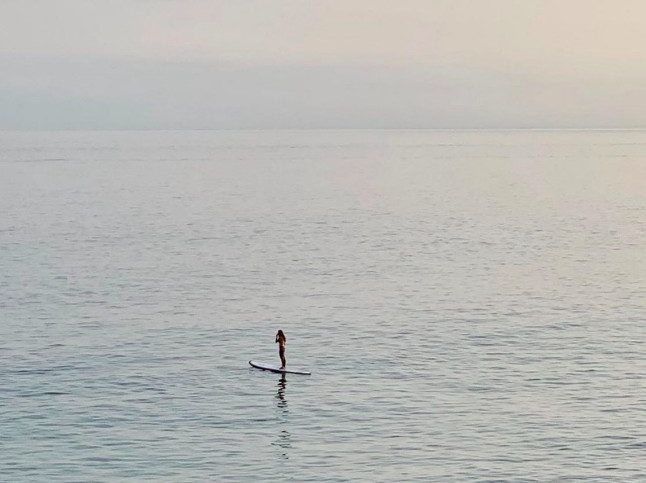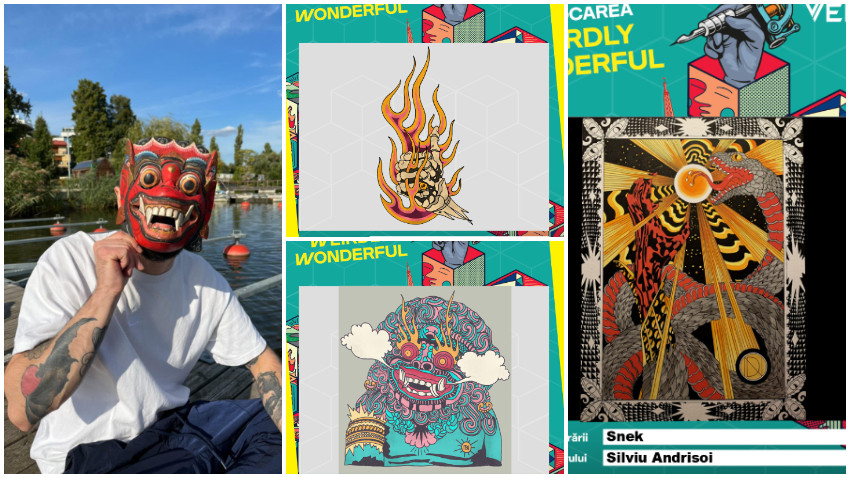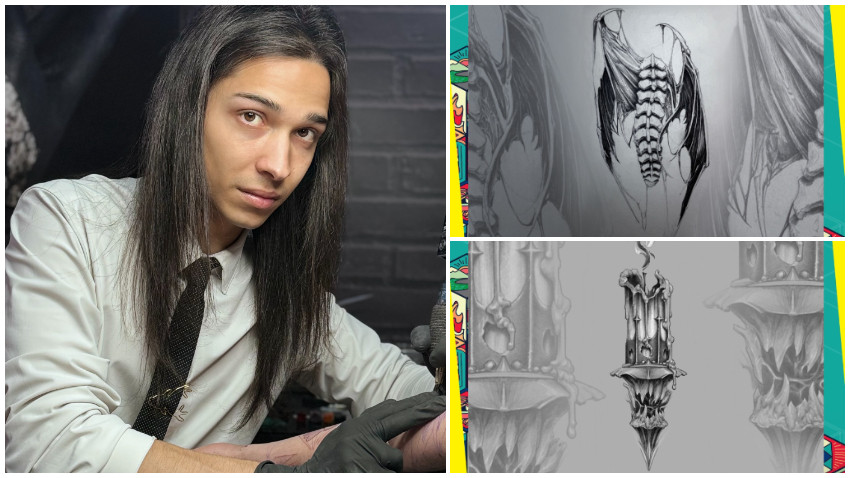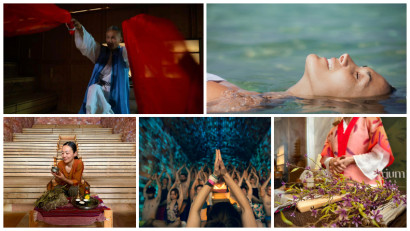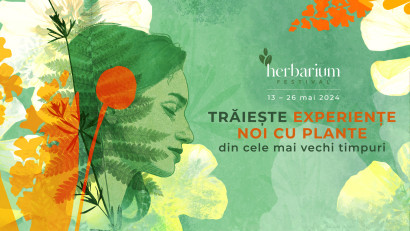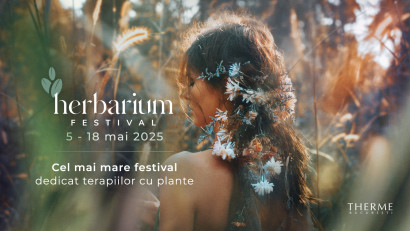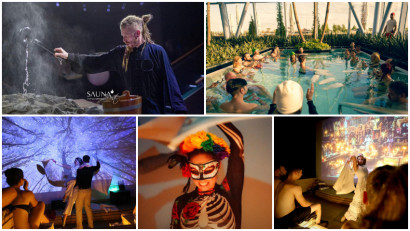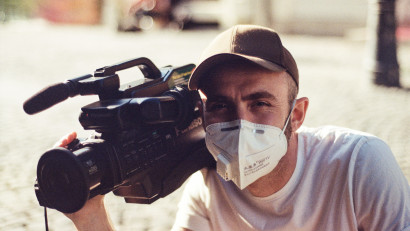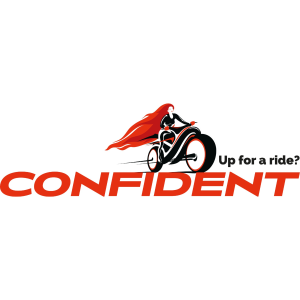Meditation is the most difficult simple thing: to sit still for a few minutes and just breathe, to take a break from the continuous dialogue of thoughts. Many give up before they start. Because those minutes when you try not to think about anything seem infinite. But what if we gave the brain a little help to take the break it needs?
Jobi Manson is a visual artist & sculptor. She creates art that moves through the mediums of water, light, sound, & stone. In 2015, Jobi birthed Sēfari, a platform for simple & elemental experiences that merge science, nature, and art.
"I've found through so many different kinds of practice and repetition, how to put myself or someone else in a kind of environment to change themselves", says Jobi.
Jobi Manson came to Bucharest at the Herbarium Festival, where she had several sessions of guided meditation in water. We talked with her about the practice of Sēfari, meditation and the search for balance in a world where normality means speed and deadlines.
The balance
I think my life and also my work has led me to understand what does it mean to be balanced in my body, in my mental state, and in my spiritual center. And so I've found through so many different kinds of exploration, especially with my work, that for me, when my mind and body are in balance, I'm most able to access my intuitive, creative, spiritual expression. People throw that word around a lot, spirit. To me, what that means is our sense of vitality.
And I love thinking about how water specifically helps us balance the nervous system at the deepest level. So that when our body is that balanced, we are instantly merged at one with our expression.
Sēfari
Sēfari is really a practice of where art and nature come together. I started this work where all life began. I started it in the ocean. And for many years, I would take people, I had no idea how to talk about this, I just knew that I had to bring people back to nature.
And the whole idea of what I offer is to help people come home to their body so that they can feel in touch with their nature. And I use water to help me do that. I'm not using just water, but every water environment is different. And my work explores how our environment shapes our experience, and we become what we absorb. So I've found through so many different kinds of practice and repetition, how to put myself or someone else in a kind of environment to change themselves.
The first step is always connection. To bring somebody back in touch with their body. îy work focuses on the nervous system, but there's different expressions of the nervous system, and we meet the nervous system through the senses. So my work focuses on the sense of touch and the sense of sound. They're the fastest expressions of our nervous system, and they're the things that are always keeping us in touch with our environment. Most people that I work with are not in their body. They're in their mental dialogue. But as soon as they get in a water environment, they have to be present. So somebody doing this practice in a repetitive way for 30 minutes a day or 20 minutes a day, immersing in the water, but not just immersing, immersing while paying attention to what they're sensing, what they're feeling, helps cultivate embodiment.
So first step is always connection. Second step of the practice is contemplation. What am I sitting with and how is it moving me and changing me? And then I help people channel that into creativity and creative expression. So I'm always looking at, what material lives inside of you that doesn't live inside of anybody else? And how can I help you get in touch with that? Because you are one in eight billion people.
The beginning
I started in 2015. I began by taking people with me out into the middle of the ocean. So I would bring them onto a huge 15-foot paddleboard and I would lay them down on my paddleboard and we'd be about a half a mile out into the ocean. And I had no idea what I was doing. I would handwrite meditations for every single person. I was so in my own head about saying the wrong thing or I don't know what I'm doing. I did that for the first year probably. The minute I put away my support system and just let myself do the thing that I needed to do things started to get very interesting.
When I take people to the edge in that way, I'm working with their deep subconscious and I'm taking them into the depths, literally. Everything is about creating this embodied experience. So that somebody can relate to what they're seeking to be in touch with. It's not a conceptual thing. You're physically going through it.
The beauty of change
The reason I began working out in open space that way was because I wanted to be replenished myself while I was doing this work with somebody and I really wanted their energy not to flow into me to flow out. Circulation is very important. It's the simplest thing bringing people out into nature, but my purpose is about reminding people that we share the planet with other things. And to learn to respect our body as our first environment, but also the surrounding environment and when we have a dramatic experience of nature whether it's going out into the ocean or just going out into an environment that we don't have control over, everything begins to change.
It's a huge experiment with surrender and control and fear and resurrection and putting people in touch with their instincts. You let the fear come up so that you can be with it and then it no longer controls you. You move through these experiences of discomfort and fear and learn about your own strength, learn about your own trust, learn to move through something really uncomfortable and sit in it everything changes. The whole purpose is to experience the beauty of change and the challenge of it and support people while they're going through that.
What advice do you have for those who try to meditate and fail
I designed this Sēfari meditation practice because I'm that person. And that comes from an overstimulated environment and it also is a response to hypervigilance or an overdeveloped safety mechanism where you're always looking out for like what's the next thing? That is the natural state that we have adopted as normal. That's not normal. That's what our cultural expression has normalized in our bodies.
Alan Watts, an iconic philosopher from the 1970s, used to say we have to get out of our head at least once a day to come to our senses. Yeah. And water does that. After five minutes in water the front of your brain where all your thinking happens your prefrontal cortex turns off and the back of your brain your limbic system turns on. My practice focuses on touch and sound because you can't actually be in your head. When something is touching you have to be with the thing that's close to you.
The best way to hijack your mind is to take it out of the dialogue. It's in language. Your fixation gets stuck in language. So music puts it in a different rhythm. This is a space that fills with sound. If you have trouble meditating, fill it with a different sound and use your body to move through the experience.
That's why I created what I created because I have a really hard time being still. It's gotten way easier over the years and through a lot of practice, but water soothes me at the deepest level so that already makes it easier to be more relaxed and then music takes you beyond. The whole thing is going beyond yourself, but really coming into the body in a way that feels pleasurable. Human beings tend to respond better to pleasure. We are creatures of habit, but we learn really easily when something feels good. So if you can create a meditation practice whatever it is for you that feels pleasurable you're much more likely to repeat it. 70% of people who start meditating quit. Because it's really hard. It's very hard. But if it feels good, you're much more likely to do it and practice it.



